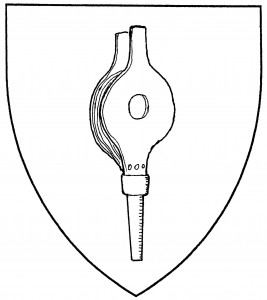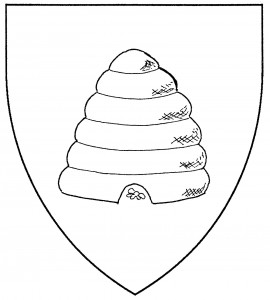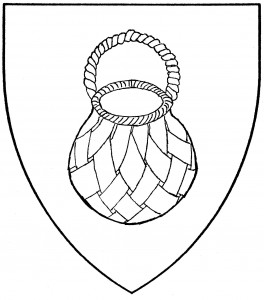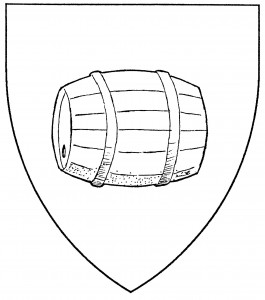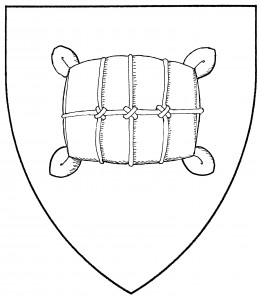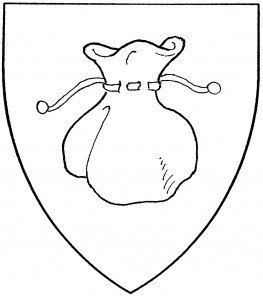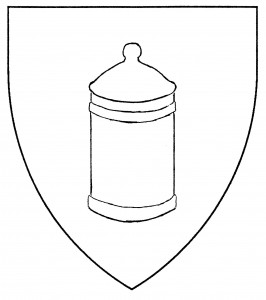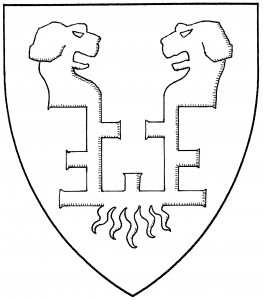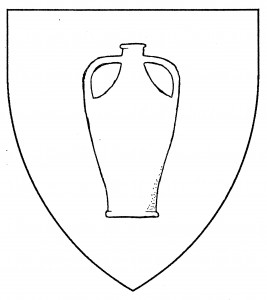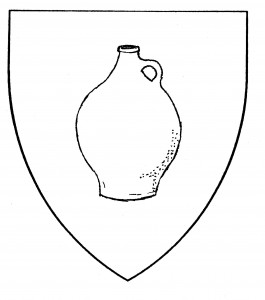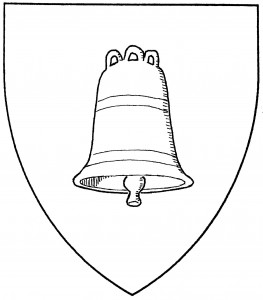
Bell (Period)
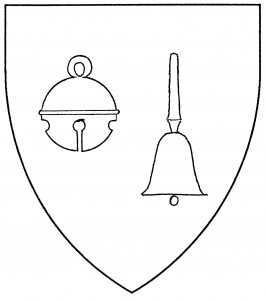
Hawk’s bell (Period); hand bell (Accepted)
A bell is a cup-shaped musical instrument that rings when struck. The default heraldic bell is the “church bell”; it’s sometimes blazoned that way, and some Society examples show it in its stock (like the standard representation of the Liberty Bell). The bell is an ancient charge, dating from c.1295 in the allusive arms of Porter [ANA2 127].
Another bell found in armory is the “hawk’s bell”, of the type found on a hawk’s jesses. It’s found in the canting arms of Bellinkhoven, c.1370 [Gelre 102], and the arms of von Ernau, 1605 [Siebmacher 46]. The French term is grelot; Society blazons may also term it a “jester’s bell” or a “dancer’s bell”.
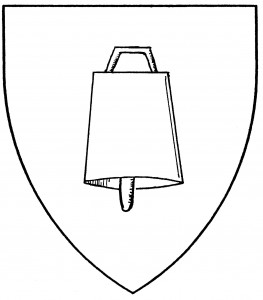
Cowbell (Accepted)
Of the types of bell peculiar to Society armory, we find the “hand bell”, with a handle on the top: a period artifact, the hand bell was used first as a public alarm or signal (as with town criers), but by 1300 were tuned instruments used in processionals [Grove 10:745-6]. We also find the “Oriental bell”, one of their cylindrical temple bells, drawn much as a church bell but with no flare at the rim. Finally, there’s the “cowbell”, worn by cattle to aid the cowherd in finding them – and evidently, a period folk instrument as well, documented as such in Virdung’s Musica Getutscht, 1511 [Montagu 91]. All of these bells, like the church bell, have their clappers to base by default.
For related charges, see zil. See also vair-bell.
The Baron of Carillion bears: Or, a bell within a laurel wreath sable.
Uberto Renaldi bears: Gules, three church bells argent.
Clarel Belton bears: Vert, three hawk’s bells argent.
Isabella Flora Turpin bears: Per fess vert and argent, a hand bell and a terrapin statant to sinister counterchanged.
Rosamund von Schwyz bears as a badge: On a cowbell argent a fleur-de-lys purpure.
